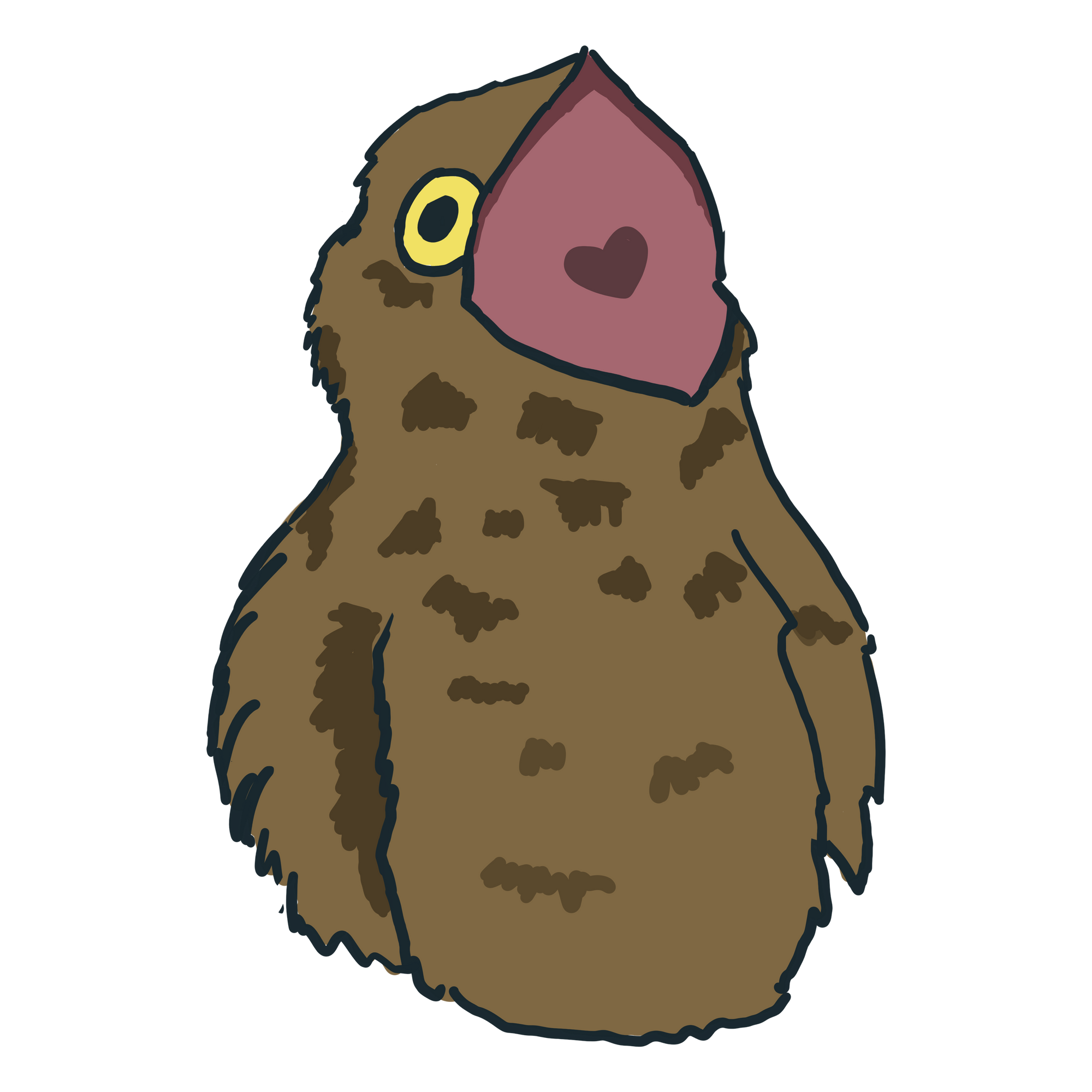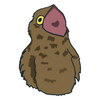What is this bird? [Singapore Edition]
![What is this bird? [Singapore Edition]](/content/images/size/w2000/2025/05/doves-pigeons-small-1.png)
Some Types of birds you will find in Singapore
The Government Drone
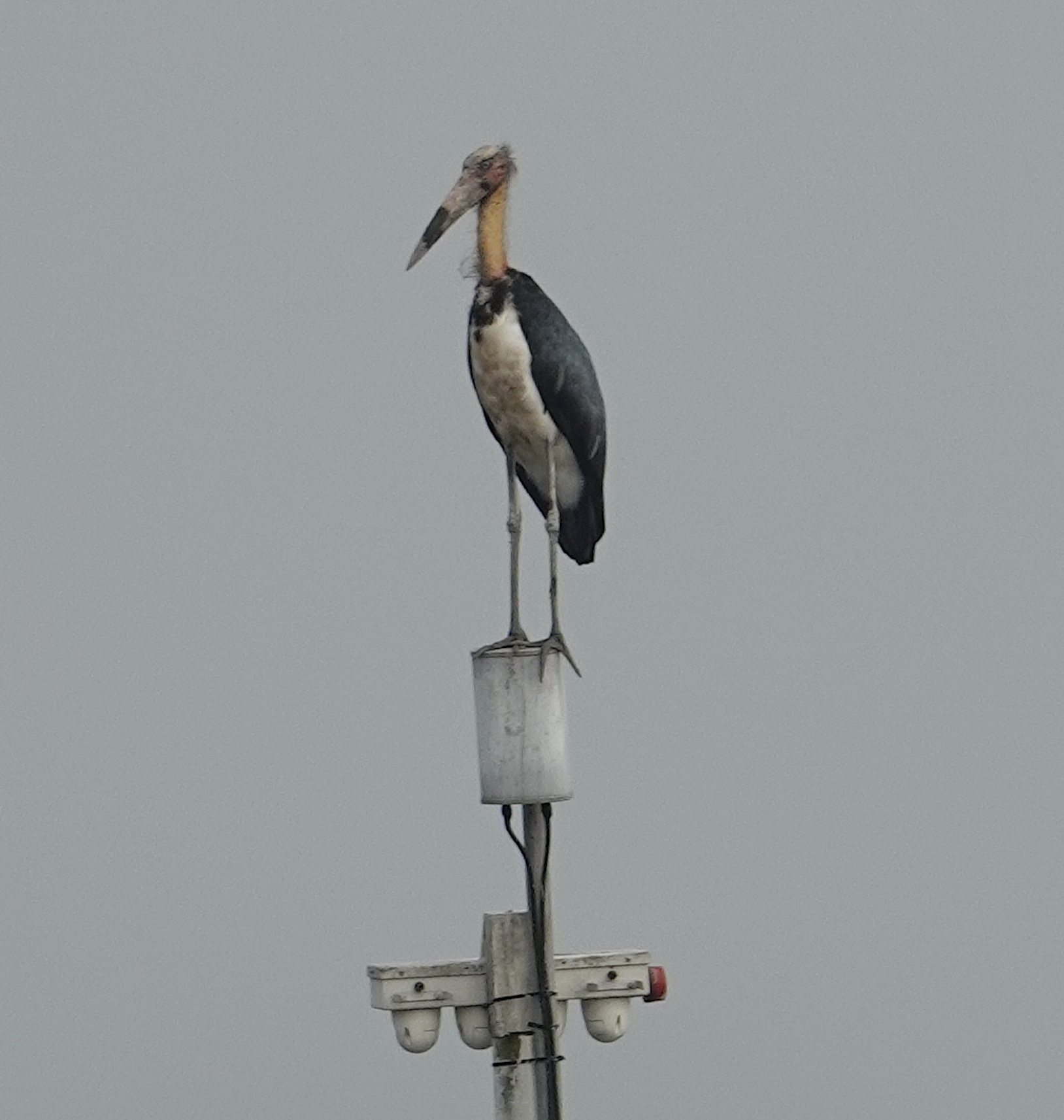
The tall leggy Government Drone often found standing on top of electrical structures which are actually charging stations. This guy ^will be back in the skies to spy on citizens later.
The 'UWU' bird

This one needs no introduction.
The "kampung chicken"

In Singapore, very loud roosters, strategically dispersed across the island and stationed on trees outside apartment windows, are tasked with a single mission — To ensure that locals get up bright and early every morning so they can lead productive lives. Roosters are critical for a prospering economy in Singapore.
Javan Mynah

No one would think that these Mynah birds are actually globally vulnerable as they are doing well in Singapore. Too well in fact. In public community spaces, they are able to navigate around complex machinery, speak English and use the MRT.
How to identify a bird (or any other wild thing)
The fastest way to ID a bird is by scanning a photo with one of those bird identification apps that uses image recognition. Seek app by iNaturalist does a pretty good job. The results is greatly helped by taking into account location of the sighting. The app is free and open-sourced.
WIldlife photos are often not very clear given the photos are often taken from a long distance and some species are very similar. If the AI model fails to confidently identify it, perhaps due to the usual poor image quality or messy background of bird photos, there are local experts within the iNaturalist community to help identify species and also the gender. Often, local experts would discuss and identify the species..
Here are some commonly seen local birbs.
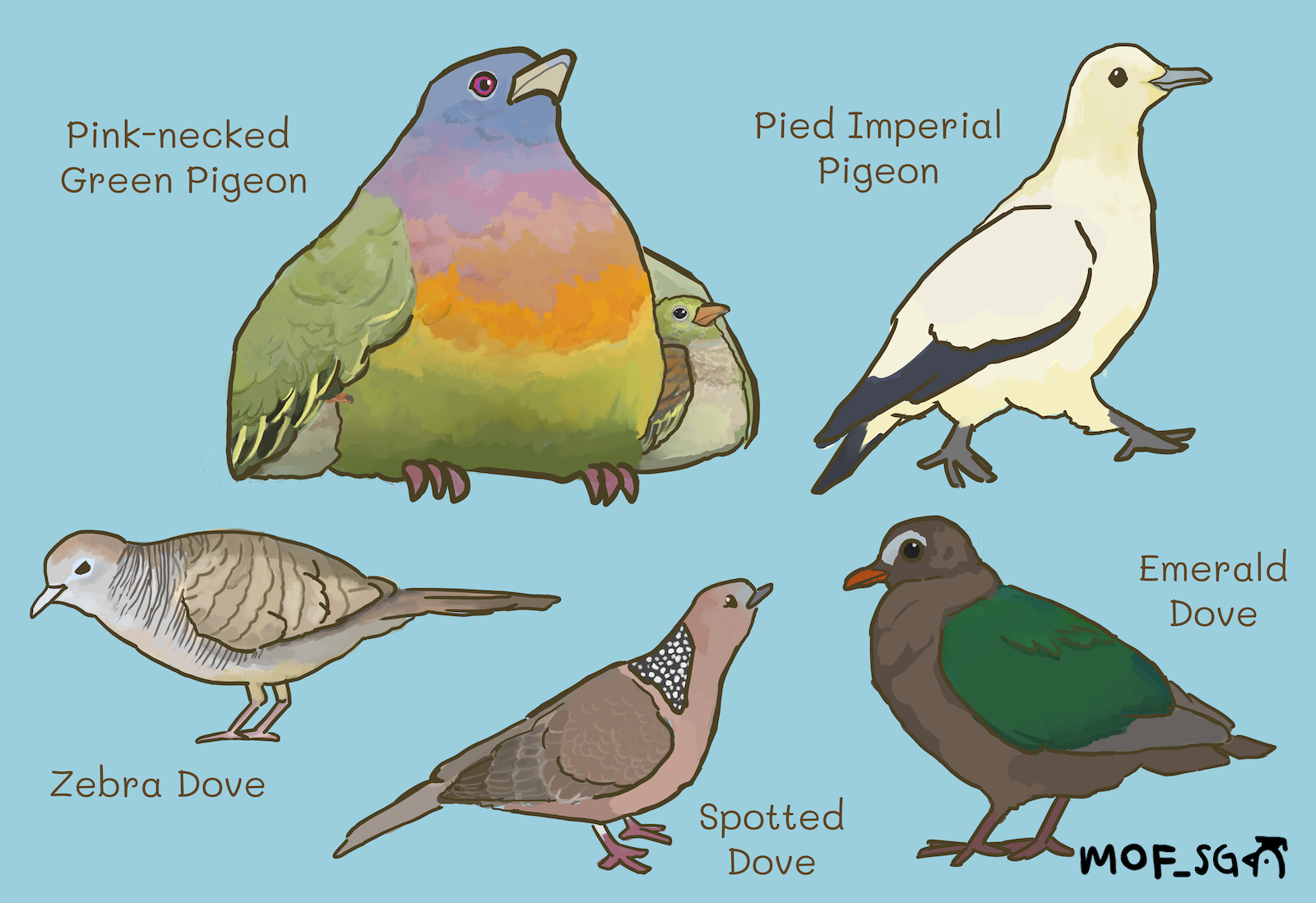
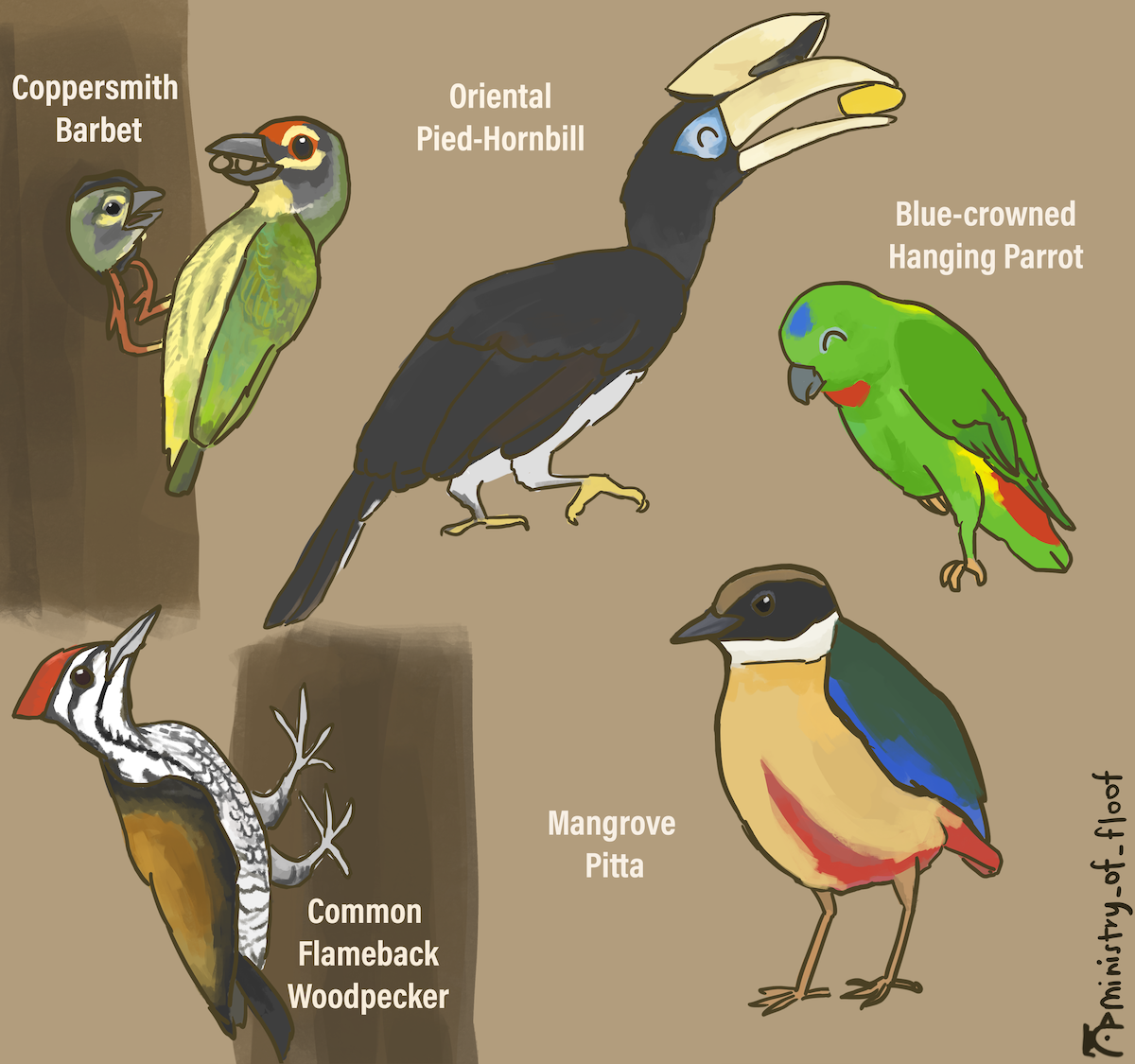
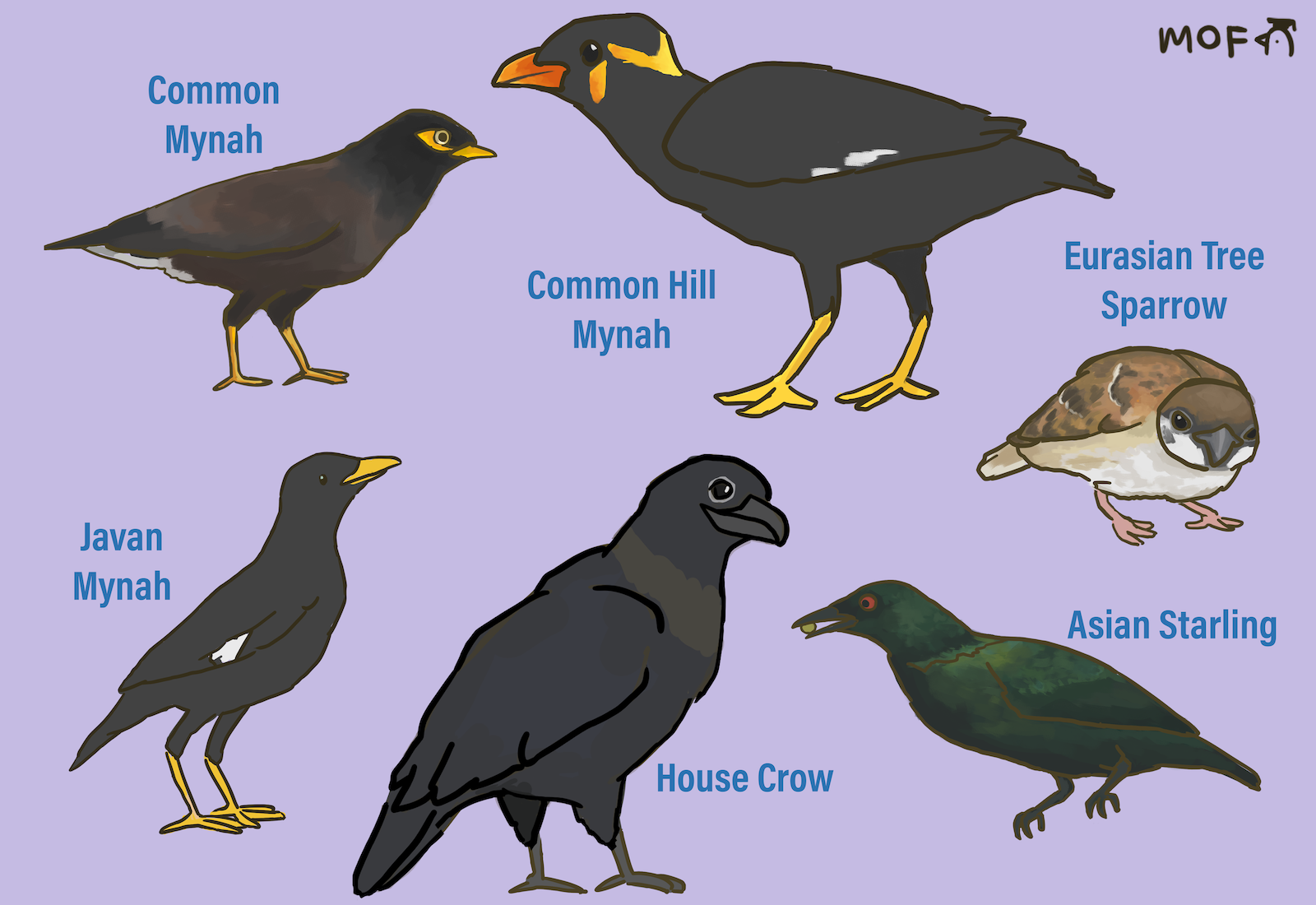
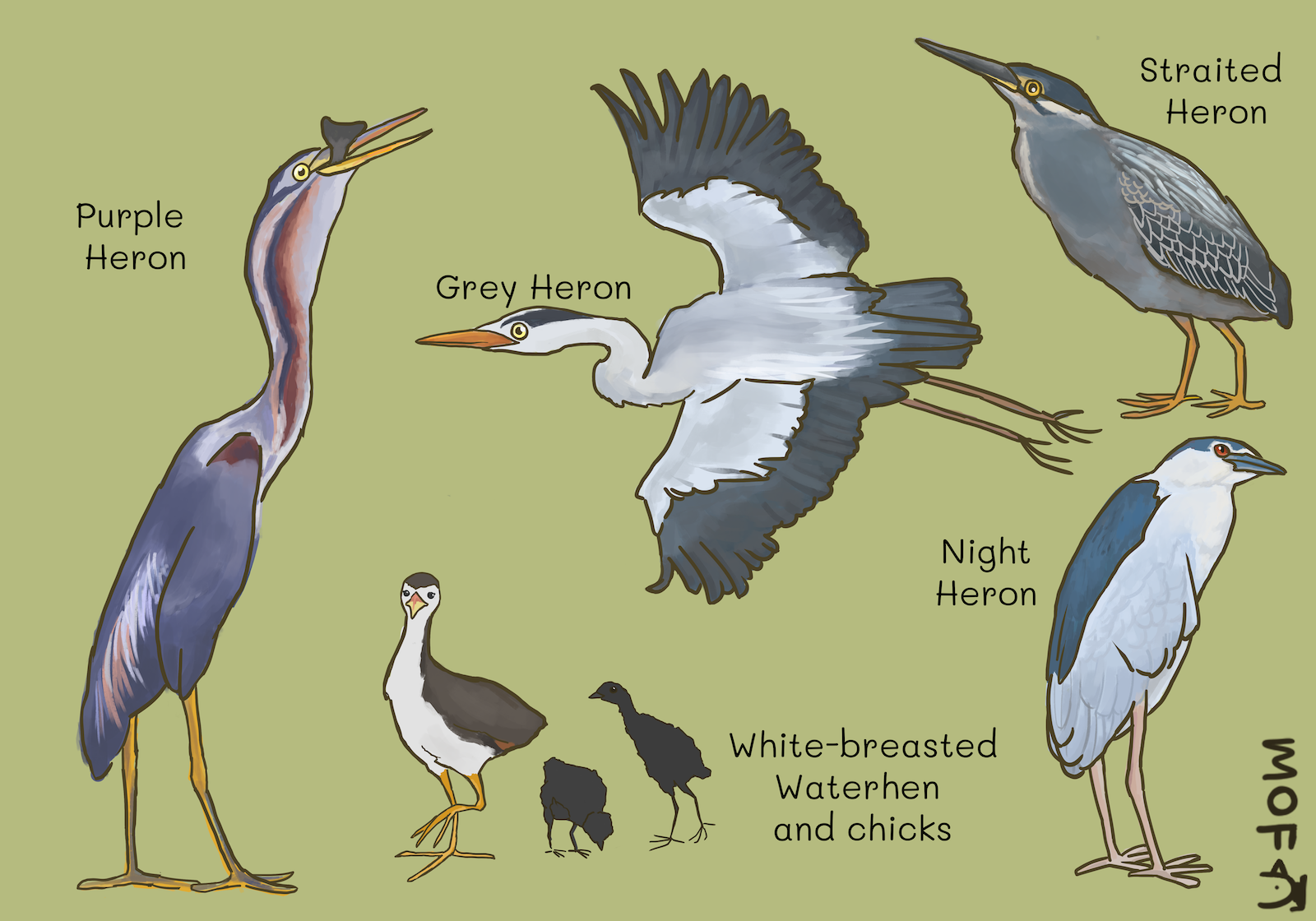
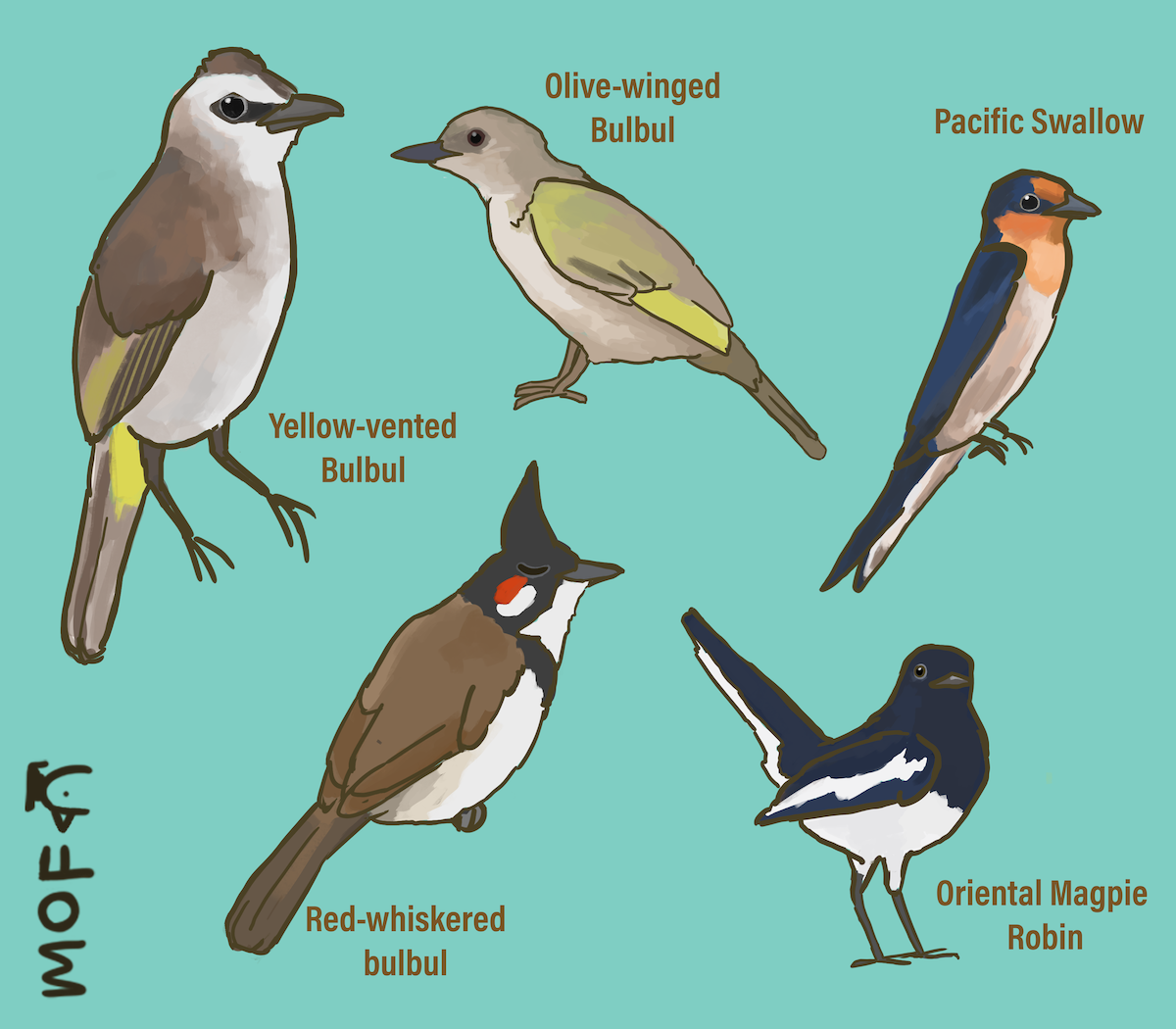
iNaturalist - Pokemon Go in real life
Citizen science is essentially crowd-sourced science. The general public can contribute and collaborate in research projects. There are platforms and also volunteer projects which anyone can participate in to contribute to research and data collection. Some of the biggest citizen science projects are apps that allow the general public to document the flora and fauna they come across. Public can engage with their environment and learn about nature while contributing to science and conservation. One example is bee recording in Singapore.
Some of the projects Singaporeans can contribute to are online and some are organised by NParks. NParks organise projects such as the Heron Watch to enlist the public help to monitor heron population at various water bodies at their own time and target. On iNaturalist, a free, open-sourced online platform, you can contribute to Singapore-based projects for butterfly, moths and many other projects.
Sometimes, you might unknowingly post a photo of a rare species later identified by a local expert. Recently, a nature photographer hanging around Singapore Botanic Gardens posted a photo of a butterfly which was identified by expert iNatters (what you would call an iNaturalist user) to a [butterfly species never seen in Singapore before](https://www.straitstimes.com/singapore/rare-butterfly-species-spotted-in-singapore-for-first-time-sets-hearts-aflutter ).
Discussion amongst local enthusiasts ensued on iNaturalist. Right after this discovery, some of the iNatting bug enthusiasts went down to Botanic Gardens to look for this rare bug. In another case, iNatters helped crack the case of a mysterious spider egg sac in Singapore that looks like cotton candy.
Another good thing about iNaturalist and eBird is that the data collected is exported to GBIF, which gives anyone free and open access to the data. This data is commonly used for conservation and biological research.
NParks has built an app, SGBioAtlas, for Singaporeans to record local wildlife but I wonder why they can't just use iNaturalist, which is much more well-built and contributes to GBIF, for data recording.
I came across this interesting bug, Red Weaver Ant-mimicking Spider, recorded in Singapore on iNaturalist. I would have never thought that "red weaver ant" is actually a Spider
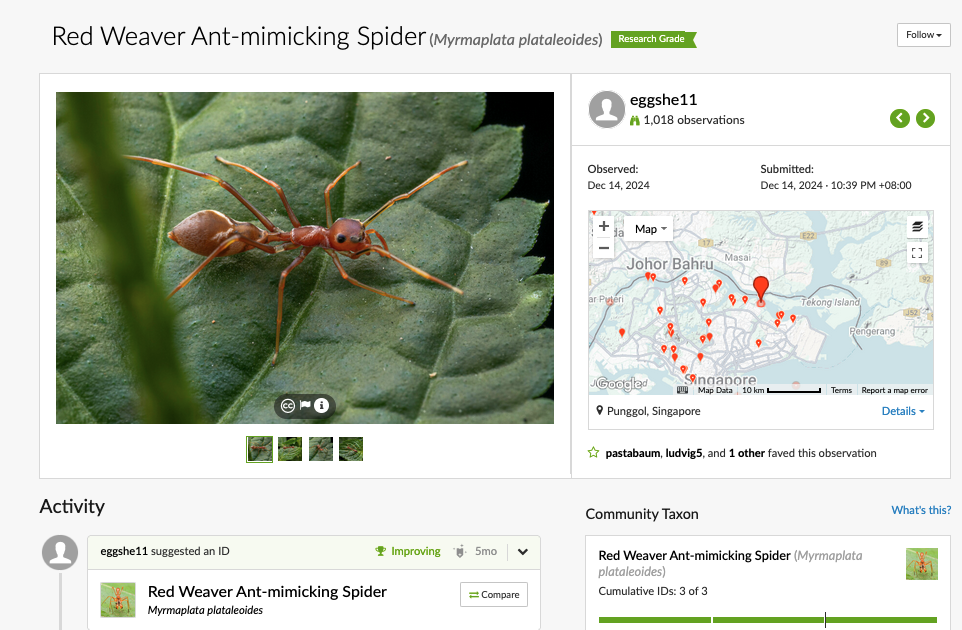
Bird racing is not a competitive sport for birds, but rather for birders. Tons of bird racers are held for birders to race to find the most number of species within a short window. One notable bird race in Singapore, the Singapore Bird Race, has been held annually since 1984 by Nature Society Singapore. There are also wildlife races for school-going kids. It's an engaging way to spend time with nature.
Productive Local citizen scientists
The iNaturalist Power users in Singapore take many really nice photos. One very productive local iNatter is Budak. Her macro shots magnify the bugs and marine critters to display cool features.
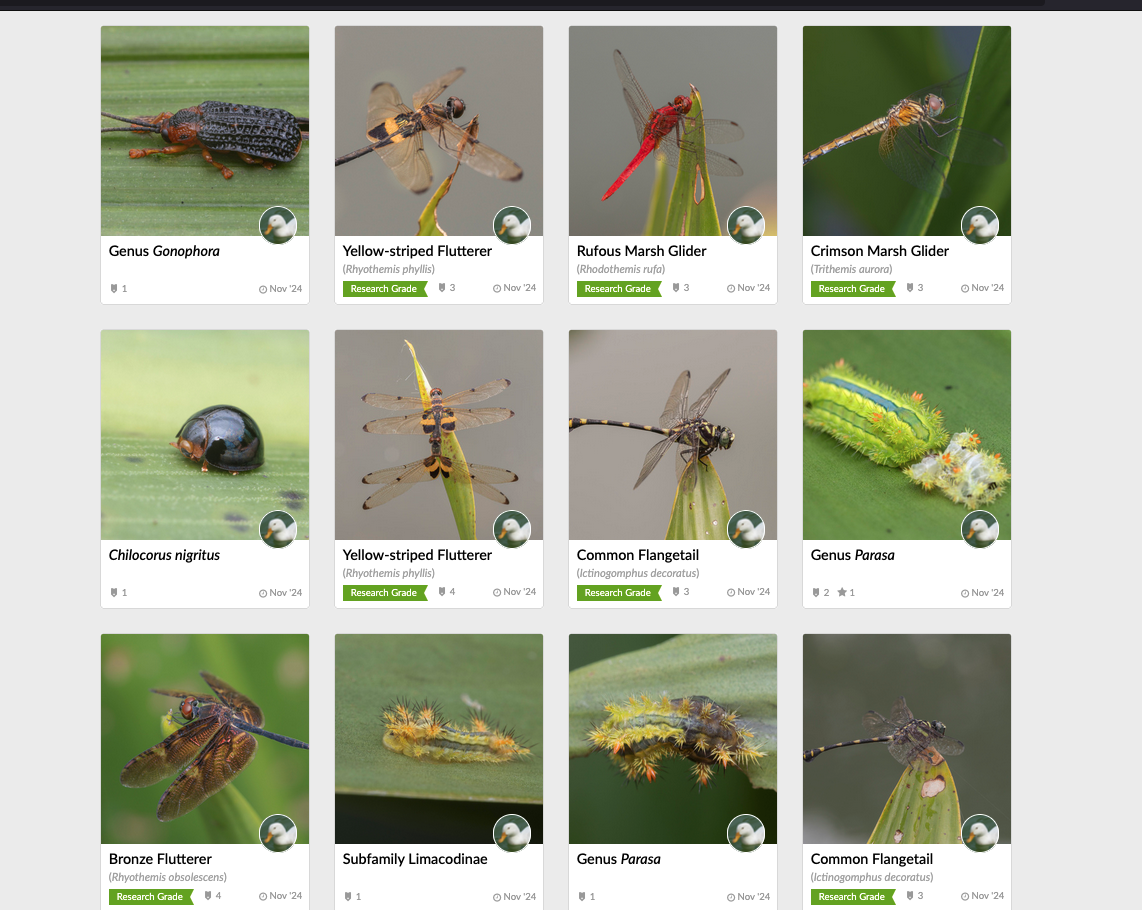
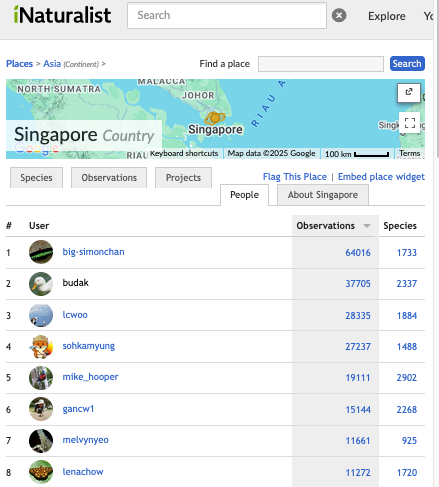
Hi, if you like my work and would like to help with my server costs (which I pay for haha), do consider buying me a coffee / kopi / kofi
